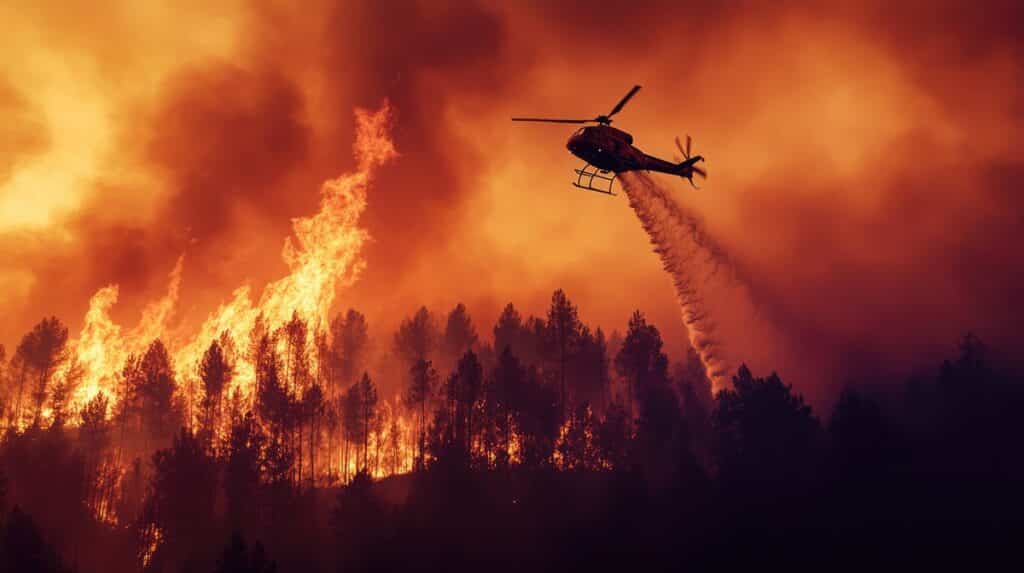The nation’s homeowner’s insurance market has come under heavy pressure as the number of climate-related events striking the U.S. grows annually.
Talks of an overhaul of the Federal Emergency Management Agency (FEMA) and the National Flood Insurance Program (NFIP) have been met with criticism ever since Department of Homeland Security Secretary Kristi Noem announced in a cabinet meeting “we’re going to eliminate FEMA.”
With FEMA’s role in emergency management, flood mapping, and flood insurance under pressure from the Trump administration, an escalation in climate-related events has homeowners, lenders, and local governments exposed and ill-prepared to deal with any potential climate-related events.
While a national issue, California’s homeowner’s insurance market specifically is under growing financial pressure following January’s catastrophic Eaton and Palisades wildfires, which caused an estimated $52.5 billion in economic losses and affected approximately 18,000 structures, among which included 11,300 homes, (90% of which were absolutely destroyed). The fires also claimed 29 lives, making them among the costliest wildfires in U.S. history.
According to a study by Harvard’s Joint Center for Housing Studies, signs of a deteriorating private insurance market preceded the fires. According to a Federal Insurance Office (FIO) report, private homeowner’s insurance nonrenewal rates between 2018 and 2022 in fire-hit ZIP codes like Altadena (91001) and Pacific Palisades (90272) surpassed both California’s statewide average (1.3%) and the national average (1.2%), reaching 1.7% and 1.8%, respectively, in 2022.
Premiums in these high-risk areas also rose well above inflation during the same period. In Pacific Palisades, average annual homeowner’s insurance premiums climbed 33% above inflation, from $5,025 to $6,689. In Altadena, they increased 26% above inflation, from $1,485 to $1,873.
As private insurers have pulled back from riskier markets, California’s Fair Access to Insurance Requirements (FAIR) Plan, which is the state’s insurer of last resort, has seen unprecedented growth.
In Pacific Palisades and Altadena alone, FAIR Plan policies more than doubled between 2021 and 2024, growing from 1,184 to 2,388. Following the fires, the FAIR Plan received about 5,000 claims and is now facing an estimated $4 billion in total losses. To remain solvent, the plan will assess $1 billion in emergency fees on its member insurers, marking the first emergency assessment in more than 30 years. Half of those fees can be passed on to consumers (private insurers and policyholders across the state).
California’s insurance commissioner recently approved a 17% rate increase for State Farm, the largest homeowner’s insurer in the state, amid what was described as a “statewide insurance crisis.”
As rebuilding begins, policymakers face competing pressures: respond quickly to displaced homeowners while improving long-term climate resilience. LA Mayor Karen Bass authorized expedited permitting and limited environmental review to “clear the way to rebuild homes as they were.”
However, experts emphasize the importance of risk mitigation to ensure future insurability and affordability. Upgrades like fire-resistant roofs, windows, and landscaping can reduce losses and may qualify for insurance discounts. Some states, including California, now require premium discounts for specific home-hardening measures.
While the nation is in the midst of fire and hurricane seasons, understanding insurance coverage, hazard risks, and mitigation options will be crucial for homeowners navigating the state’s evolving insurance landscape.
And while many are fortunate enough to still get coverage, many nationwide are bracing for premium hikes in the not-too-distant future.
State Farm, for example, announced that it is raising home insurance rates by 27% beginning August 15, 2025. The price hikes come as the insurer anticipates more extreme weather, rising repair costs from inflation, and additional expenses related to Trump administration-imposed tariffs. The company claims that for every dollar in premiums collected, it paid out $1.26 in total costs.
“In Illinois alone last year, we paid out more than $638 million in hail damage claims,” State Farm spokesperson Gina Morss-Fischer said in an interview with ABC News. “That was second only to the state of Texas, so these changes are taking effect today for new policies and for existing policies on August 15th.”






